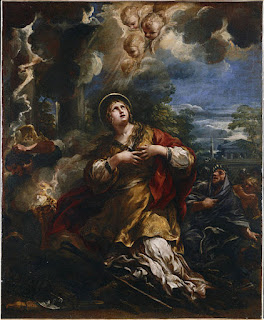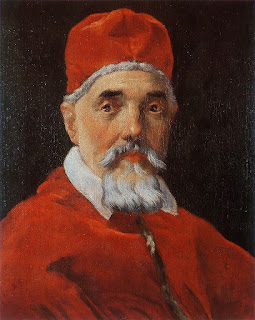Pioneer of Stile Liberty - the Italian twist on Art Nouveau
 |
The rear facade of the Palazzo Monteciterio, which was
almost completely rebuilt by Ernesto Basile |
The architect Ernesto Basile, who would become known for his imaginative fusion of ancient, medieval and modern architectural elements and as a pioneer of Art Nouveau in Italy, was born on this day in 1857 in Palermo.
His most impressive work was done in Rome, where he won a commission to rebuild almost completely the
Palazzo Montecitorio, the home of the Chamber of Deputies of the Italian parliament.
Yet his most wide-ranging impact was in Sicily, where he followed in the footsteps of his father,
Giovan Battista Filippo Basile, in experimenting with the Art Nouveau style.
Basile senior designed the Villa Favaloro, in Piazza Virgilio off Via Dante, and with Ernesto and others, notably
Vincenzo Alagna, taking up the mantle, it was not long before entire districts of the city were dominated by
Stile Liberty, the Italianate version of the Art Nouveau that took its name from the
Liberty and Co store in London's Regent Street, which sold ornaments, fabric and objets d'art to a refined clientele and encouraged modern designers.
 |
Ernesto Basile was a pioneer
of Art Nouveau style |
Fine examples of Ernesto Basile’s architecture in Palermo include the
Villino Florio (1899–1902) in Viale Regina Margherita, which is open to the public, the
Hotel Villa Igiea (1899–1901) on the waterfront and the
Casa Utveggio on Via XX Settembre.
He also completed the construction of the city’s great opera house, the Renaissance-style
Teatro Massimo, which had been started by his father in 1874 and was finally completed in 1897, its progress interrupted by an eight-year hiatus after a dispute over funding. Allegations of fraud were levelled at Basile senior and he was to have been replaced with another architect until a public outcry forced his reinstatement. In the event he died soon after work restarted and the final six years were overseen by Ernesto.
Taught initially by his father, who was a professor at the
University of Palermo, Ernesto graduated from the Royal School of Engineering and Architecture and soon afterwards moved to Rome.
His work on the Palazzo Montecitorio came about after he took part in a competition held by
Francesco Crispi, the President of the Chamber of Deputies, to find an architect to supervise the reconstruction of the palace, designed by
Gian Lorenzo Bernini with later input from
Carlo Fontana, which had been seized by the new Italian government in 1870 but had fallen into serious disrepair.
 |
Ernesto Basile's stylish Villino Florio is one of many
examples of Stile Liberty in the city of Palermo |
Basile demolished the wings and rear of the palace so that Bernini’s facade was virtually all that remained, building a new structure dominated by four red-brick towers at the corners. Basile also added the Transatlantico, the long and impressive salon which surrounds the grand debating chamber, which is also Basile’s design.
The project, in which Basile fused the Roman classical and Baroque elements of the building with Art Nouveau, is seen as one of the most important milestones for early modernism in Italian architecture.
Basile’s other notable works in a prolific career include the building for the National Exhibition of Palermo in 1892, the
Teatro Sociale in Canicattì in the Sicilian province of Agrigento, the P
alazzo Bruno di Belmonte in Ispica in the province of Ragusa in the southeast of the island and the
Palazzo San Giorgio in Reggio Calabria.
In 1890 he succeeded his father as a professor of architecture at the University of Palermo. He died in the city in August 1932.
 |
The extravagant Liberty-style Antico Stabilimento Balneare
di Mondello is a reminder of the resort's golden age |
Travel tip:
Two particular areas of Palermo and the surroundings are dominated by
Stile Liberty buildings. One is Via Libertà and the streets running off it between Politeama and the Giardino Inglese; another is Mondello, the seaside town just outside the city created from an area of former marshland, where the promenade retains many Art Nouveau villas built for the well-to-do of Palermo around the turn of the century, some designed by Ernesto Basile. Right in the water itself, built on stilts with a bridge linking it to the promenade, is the extraordinary Antico Stabilimento Balneare di Mondello, the extravagant Stile Liberty bathing platform built by Rudolf Stualker.
Hotels in Mondello from TripAdvisor.co.uk
 |
Ernesto Basile's father designed Palermo's impressive Teatro
Massimo before his son completed the project |
Travel tip:
The
Teatro Massimo is the largest opera house in Italy and the third biggest in Europe after the Opéra National de Paris and the K. K. Hof-Opernhaus in Vienna. It was originally designed with an auditorium for 3,000 people, although today there is a limit of 1,350. There are also seven tiers of boxes. Enrico Caruso sang in a performance of La Gioconda during the opening season, returning to perform in Rigoletto at the end of his career. The theatre was closed for renovation for more than 20 years but reopened in 1997. The final scenes of the third part of
The Godfather Trilogy, based in Puzo's novel, were filmed there.
More reading:
Gian Lorenzo Bernini - Italy's last universal genius
Ulisse Stacchini, the architect behind two major Milan landmarks
The groundbreaking designs of Paolo Soleri
Also on this day:
1788: The death in Rome of British royal pretender Charles Edward Stuart
1888: The death of Saint Don Bosco
1933: The birth of Mafia boss Bernardo Provenzano
(Picture credits: Palazzo Monteciterio by Mac9; Villino Florio by GiuseppeT; Mondello Balneare by Berthold_Werner; Teatro Massimo by Bjs; all via Creative Commons)
Home














